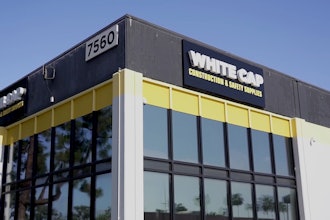When you decide it is in your company’s best interest to change or consolidate carriers, there are seven critical steps you will need to take to make sure that the process comes off without a hitch.
Whether it’s because you want to shift from a decentralized logistics network to a centralized one, improve your company’s operations to become more cost-efficient on an international level, create profit centers for your chosen carriers that will result in significant rate discounts, or all of the above, when you decide it is in your company’s best interest to change or consolidate carriers, there are seven critical steps you will need to take to make sure that the process comes off without a hitch.
Step # 1 – Develop a master company list.
To develop a master company list, you must first determine what carriers are being used and then analyze your current carrier agreements. To do this, you will need to work with your company’s logistics team to gather the location information for all of your physical locations, including sales and satellite offices. Then, you will need to create a subsidiary list of all of your shipping locations that are not “attached” to each of your global carrier’s master agreements. Finally, you should analyze the cost of any and all third party distribution centers that are currently managing your company’s volume in order to uncover any wasteful spending and/or savings opportunities.
Step # 2 – Receive global carrier account numbers.
Once your master company list is complete, you will need to send it to each of your carriers and request a list of every carrier account number associated with the addresses on the master list. These account numbers will determine what additional data will need to be retrieved. Be prepared to receive all of these account numbers; companies with large, global logistics networks will receive a significant amount of data that will need to be housed, cleansed, and analyzed. Unless you have technology in place that allows you to create accurate summaries and reports for the purpose of analysis, the information you receive will be virtually useless.
Step # 3 – Request carrier package level detail (PLD) for all account numbers worldwide.
After you have received your carrier account numbers and completed your review and analysis of them, you will need to redistribute the list to each of your carrier’s electronic data interchange departments. Ask your carriers to forward you a total of 52 weeks of PLD for each account number on the list. In order to prove the profitability of your company to the carriers, 52 full weeks of historical data will be required. The PLD you receive should include every charge billed and/or paid by your company.
Step # 4 – Perform on-site visits to major shipping locations worldwide.
Making on-site visits to your major shipping locations worldwide will allow you to validate your company’s shipping characteristics. You must validate a minimum of 60 percent of your company’s global parcel shipping processes in order to be able to provide your carrier with enough information to audit your shipping characteristics from their end. The characteristics and worldwide shipping practices information you provide to your carrier must be accurate. Below is a sample list of the types of characteristics that should be recorded during on-site visits:
- Box sizes
- Weights
- Irregular packages
- Type of packaging
- Times of pickups
- Night/weekend pickups
- Type of manifesting/labeling
- How many manifest machines
- Trailer loading (direct/palletized)
Step # 5 – Analyze shipping data and determine volume by lanes.
Use the shipping data you’ve obtained in order to perform analyses that will determine which global carriers have the ability to service specific lanes. Based on your results, you should be able to come up with multiple savings scenarios for each carrier change or consolidation option you may be considering.
Step # 6 – Complete request for pricing (RFP) and send to carriers.
From the beginning of the consolidation process, you should have been working to create a global RFP to be presented to each of your current and potential carriers. After your RFP has been submitted, and in accordance with your RFP timeline, your carrier will have a specific amount of time (usually 30 days) to complete the RFP and develop a global incentive program for your company. Benchmarked service incentives that reflect the minimum discounts you require should be included within the RFP. When you respond to data requests from the carriers, try to do so within 24 hours so that you can hold the carriers to your strict RFP timeline. Keep in mind that, in the end, each carrier bid received will be subject to carrier service enhancements as well as your company’s estimated volume.
Step # 7 – Review final pricing.
Import your carrier bids (pricing) into the database housing your company’s 52 weeks of historical shipping data. Perform analyses that will reveal what your company’s savings will be over a 52-week period. You should be able to create at least three savings scenarios that you will expect to later revise based on actual pricing. When all is said and done, you should be able to confidently change/consolidate carriers according to the hard data you’ve accumulated.
If, while reviewing the seven steps above, you made the realization that your company is not in the position to perform each step cost-effectively and within a reasonable timeframe, you have probably come to the same conclusion that so many companies that have undertaken the carrier consolidation process have before you: You can’t do it alone.
And you don’t have to. A third party solutions provider that has the technology and expertise required to house, cleanse, and analyze your shipping data, perform on-site visits, perform further high-level analyses of your data, and then successfully create an RFP and final presentation scenarios based on final bids, is going to help you achieve carrier consolidation faster and more cost-effectively than you could if your company were to try and take on the project solo. In a still volatile economy, the benefits of using a third party analytics group with expertise in data analytics, rate discussions, and carrier consolidation are going to far outweigh the costs, particularly if the savings you achieve are ongoing, and have a positive, widespread effect on your company for years to come.


















